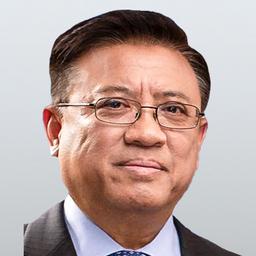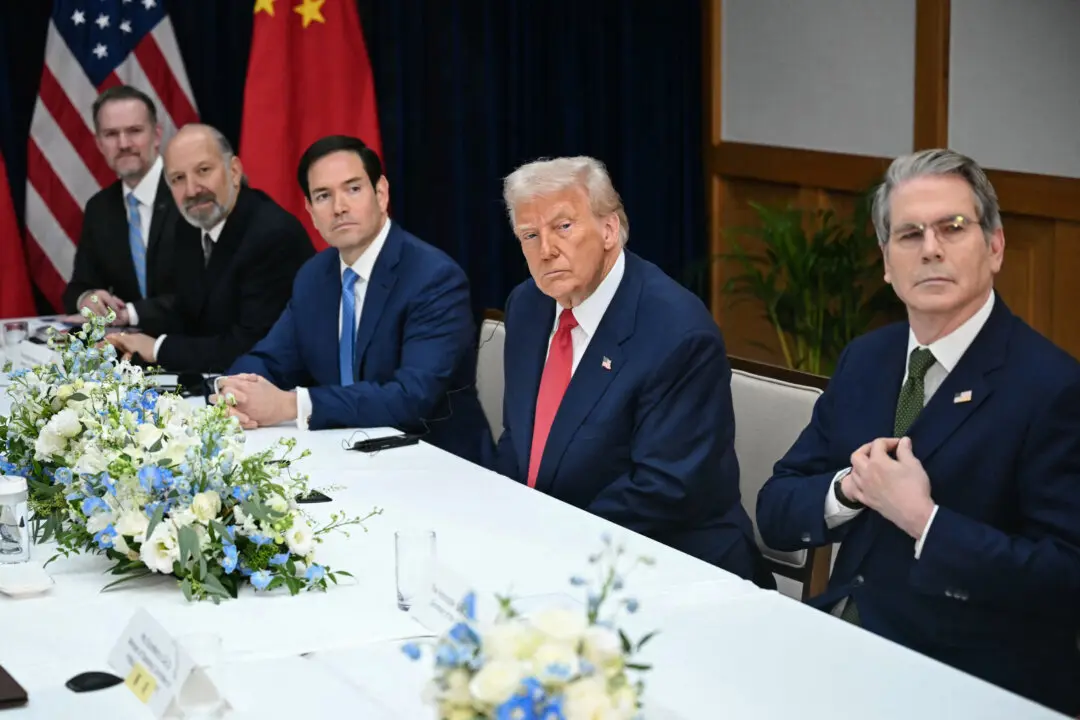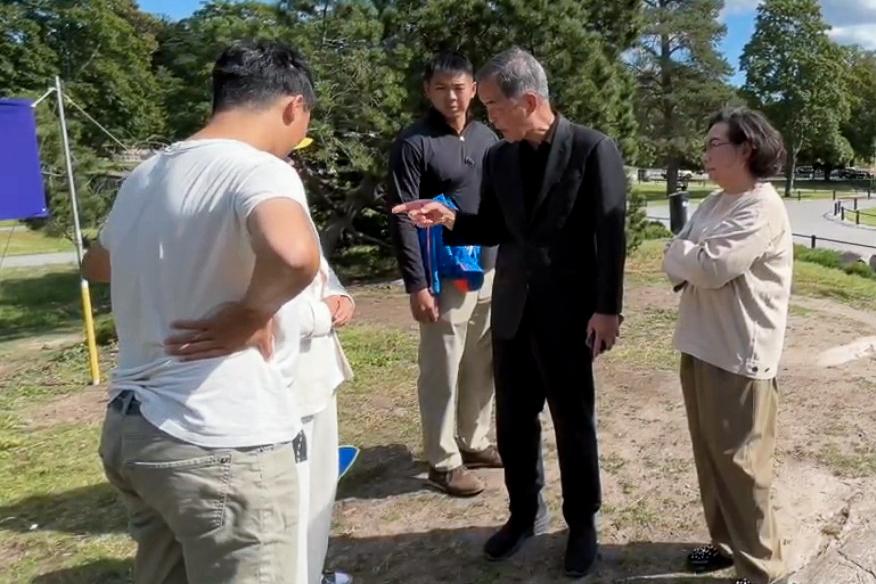Over the last two decades China has famously become the workshop of the world due to the plentiful supply of one resource: cheap labor. The case of Mr. Zhang Haichao helps shed light on how labor costs in China are kept low.
Zhang, a farmer in Xinmi City in Henan Province, worked in a factory run by Zhengzhou Zhendong Ltd. in nearby Zhenzhou City making fire-retardant bricks. In a workplace filled with thick dust, he was given no protective gear. In August 2007, Zhang began complaining of a persistent cough and shortness of breath, and fatigue, which he initially thought was the flu.
He went to several hospitals, trying to find the cause of his sickness. The diagnosis of hospitals in Beijing and Zhengzhou, the capital city of Henan Province, was the same: pneumoconiosis. More commonly known by a variety of names, the most familiar of which is the black lung disease suffered by coal miners, pneumoconiosis is an occupational disease caused by breathing in dust.
According to China’s laws and regulations, a job-related disease, also called an occupational disease, can only be diagnosed by a state-designated institute. In Zhang’s case, this was the Zhengzhou Occupational Disease Prevention and Treatment Center (ODPTC). This center rejected the other hospitals’ diagnosis and insisted on its own diagnosis, suspected pneumoconiosis plus tuberculosis.
According to the ODPTC diagnosis, Zhang had the symptoms of pneumoconiosis but the disease was not progressed far enough for him to be eligible for the free treatment and job-related compensation promised by China’s laws to someone with a fully developed case of black lung disease.
Frustrated by his two-year-long struggle to get an accurate diagnosis, Zhang requested the painful surgical procedure of thoractomy, a surgery his family could just barely afford. In a thoractomy, the surgeon cuts the rib muscles and spreads the ribs apart, so that a piece of lung may be removed for analysis. The lung sample obtained showed that Zhang did indeed have pneumoconiosis.
The Zhengzhou ODPTC, however, didn’t surrender easily. It said that only the pathology diagnosis from the removal of a whole lung lobe or from a dead body, not a single piece of tissue, could be accepted as the basis for a conclusive diagnosis. The ODPTC also asserted that no other hospitals are authorized to diagnose job-related illnesses.
Zhang had apparently spent his family’s last savings without obtaining a correct diagnosis from the ODPTC.
But his dramatic decision to undergo open-chest surgery in order to try to get his case treated fairly caught the attention of the media. Public opinion was soon on Zhang’s side, which caught the attention of the provincial authorities. Suddenly, everything started to move forward in the fast lane.
The Henan Provincial Public Health Bureau set up a joint investigation team; the Zhengzhou Public Health Bureau instructed the Zhengzhou ODPTC to redo the diagnosis; three health officials were removed from their positions, including the deputy director of the Public Health Bureau of Xinmi City; three persons who did the misdiagnosis were stripped off the right to issue diagnoses; the Ministry of Public Health published revised new diagnostic criteria for pneumoconiosis; and Zhang Haichao got 10,000 Yuan (US$1,464) compensation from the local authorities.
Zhang’s Case Unusual
Zhang’s story appeared to have a happy conclusion: the media widely covered the story; public opinion was heard by high level officials; the persons responsible were punished; Zhang Haichao at least doesn’t have to worry about his medical costs in the near future.
Generalizations made from Zhang’s case would be misleading, according to Ms. He Qinglian. He, the author of “Modernity’s Pitfall,” is an economist who often writes about the hidden costs of China’s economic growth.
Recent cases similar to Zhang’s in which disabled workers received publicity of their plight but did not receive compensation help make He’s point. Several months ago, the mainland Chinese media reported that at a village in Yunnan Province, 50 villagers who worked at a sand company in Anhui Province got a mysterious disease, and 12 of them eventually died. It was confirmed that they had pneumoconiosis.
Five years ago, an editor at the Hangzhou City Express reported on a patient from his hometown. After having worked at a factory, the patient got sick and short of breath. Since this worker couldn’t submit any of the required five documents necessary to apply for a job-related disease exam, he had never been diagnosed. The editor took him to a local ODPTC. The doctor told him that he could take an X-ray but wouldn’t tell him if the diagnosis was pneumoconiosis nor which stage the disease was in.
Even though both of these cases, and many other similar cases, had been widely reported by the media, the patients didn’t benefit from the reports.
Systematic Abuse
China’s legal code requires that workers be given protective gear on the job. However, He says the law is not enforced.
“Because the Labor Department has a deal with the factories, there are benefits for the department, so the inspectors just pretend they don’t see anything. This is systematic,” He says.
The workers are also not told of the dangers they face on the job. “If they told the workers, that means the employers are doing something wrong while completely aware of it. Wouldn’t that be a disaster for them?”
“Nowadays factory bosses are very cunning,” He says. “Usually the bosses use employees for two or three years, then fire them, and not let them come to work. Why is that? So this way the workers won’t become ill when they’re still at work. This way the boss won’t need to provide medical expenses.”
Should a worker like Zhang seek to receive medical treatment, the system is designed to give maximum leverage to the employers. According to China’s “Prevention and Treatment of Occupational Diseases Law,” workers must have written permission from the employer to go to the state-designated institute to be examined. The obstacles that Zhang encountered when he went to his local ODTPC are typical.
When a worker is denied treatment, all he can do is, “Just wait for death. Go home and wait to die,” according to He.
Statistics from 2006 show there were more than 16 million businesses in China with poisonous and harmful materials. Two hundred million people were affected. Eighty percent of the patients with occupational diseases were diagnosed with pneumoconiosis. Since the 1950s, according to the state’s statistics, 580 thousand pneumoconiosis cases have been reported. 140 thousand of these have already died. These numbers are only from state-owned businesses that have better work protection than privately owned small companies.
According to He, independent researchers have found there are a million news cases of lung disease each year among workers and those who live in the vicinity of the factories. Some places are even called black lung villages.
Within this context, the fast reaction in the Zhang Haichao case looks more like a public relations effort meant to save face for the local authorities, not the emergence of a solution.
He says, the state wanted to demonstrate in Zhang’s case that it “cares a lot about the situation. If you look at the statistics you'll realize that the government actually doesn’t care.”
Discussion of cheap labor in China usually refers to low salaries. The plight of workers like Zhang demonstrates much more is involved in keeping costs down. The workers working in a toxic environment don’t have any protection, can’t get the permission from the employer for a medical examination, can’t get the right diagnosis from a state-designated institute and never seem to get the free treatment and compensation to which they are entitled. There is no independent union to help them, and the authorities are not on their side.
Reflecting on Zhang’s case, He said, “Why does the whole world use China as their factory? Because the authorities don’t protect workers, and don’t protect the environment.”
Additional reporting by Matthew Robertson.





